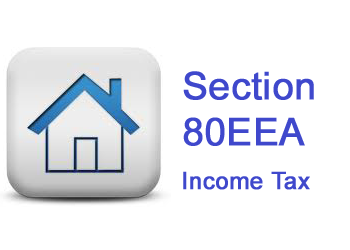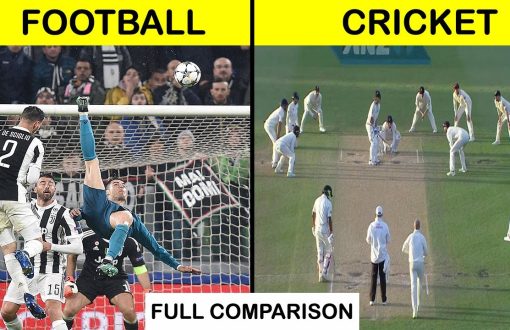Section 80EEA: Tax Deduction Against Home Loan Interest Payment

Introduction
The government has now also extended the interest deduction allowed for low-cost housing loans taken between April 1, 2019, and March 31, 2022, under the objective “Housing for all.”
Under an earlier version of Section 80EE, first-time homebuyers could deduct up to Rs 50,000 of interest paid on loans approved by financial institutions between April 1, 2016, and also March 31, 2017. As a result, a new Section 80EEA has been added that permits an interest deduction beginning with AY 2020–21. (FY 2019-20).
The government has also extended the benefit for FY 2019–20 to increase the usefulness and stimulate the real estate industry. You can use this deduction until the housing loan has been paid off.
What Section 80EEA does:
Eligibility Requirements:
Only individuals may use the deduction provided by this section. Other taxpayers are not eligible for this deduction. Therefore, you are not eligible to claim under this section if you are a HUF, AOP, partnership firm, company, or any other type of taxpayer.
Deduction Amount:
Section 80EEA allows for a deduction for interest payments up to Rs 1,50,000. In addition to the 2 lakh rupee deduction for interest payments permitted by Section 24(b) of the Income Tax Act.
If a taxpayer satisfies the requirements of section 80EEA, they may deduct a total of Rs 3.5L for interest on a home loan.
Other Circumstances:
Like Section 80EE, you must not be the owner of any other residential property on the date the loan is sanctioned to be eligible for a deduction under Section 80EEA.
To be eligible for deduction, you must also:
- A housing loan must be obtained from a financial institution or a housing finance company to purchase a residential property.
- The loan must be approved between April 1, 2019, and March 31, 2022.
- The house property’s stamp duty value should be Rs. 45 lakhs or less.
- A deduction under the current Section 80EE should not be available to the individual taxpayer.
- The taxpayer ought to be a brand-new homeowner. As of the date, the loan was approved, the taxpayer should not be the owner of any residential real estate.
- Restrictions regarding the carpeting in the home’s interior. Despite not being mentioned in section 80EEA, the following conditions are listed in the memorandum to the finance bill:
- In the metropolitan areas of Bengaluru, Chennai, and Delhi National Capital, the home property’s carpet area should be at most 60 square meters (645 square feet).
- The region, Hyderabad, Kolkata, and Mumbai (limited to Delhi, Noida, Greater Noida, Ghaziabad, Gurgaon, and Faridabad) (the whole of Mumbai Metropolitan Region)
- In other cities or towns, the carpet area should be at most 90 square meters (968 square feet).
- This definition will also apply to affordable housing projects that are approved on or after September 1, 2019.
- To further expand the benefits permitted under Section 80EE for affordable housing, Section 80EEA has been introduced. Previously, Section 80EE had been periodically changed to permit a deduction for interest paid on housing loans for the fiscal years 2013–2014, 2014–2015, and 2016–2017.
According to the section, you can only claim this benefit if you are a resident. Both resident and non-resident Indians are eligible to use this deduction.
Additionally, the section does not specify whether the residential property must be self-occupied to qualify for the deduction. Therefore, borrowers who rent their homes may also be eligible for this deduction. Additionally, only individuals may claim the deduction for joint or individual home purchases. Both parties may claim this deduction if they jointly own the home with their spouse and make loan payments together. They must, however, adhere to all the requirements set forth.
Section 24 and Section 80EEA
If the owner or his family member resides in the property, homeowners may also claim a deduction for the interest payments up to Rs 2 lakh on their home loan under Section 24. Even when the house is empty, you can deduct up to Rs 2 lakh. The entire amount of the home loan interest is deductible if you have rented out the property.
You can claim benefits under Sections 24 and 80EEA of Income Tax Act if you can meet their requirements.
First, use up your Section 24 deductible limit of Rs 2 lakh. Next, file a claim for the extra benefits under Section 80EEA. As a result, this deduction is in addition to the Section 24 limit of Rs 2 lakh.
Amount of the Section 80EEA deduction
Section 80EEA allows for also a deduction of up to Rs 1.50 lakhs. This is in addition to the Section 24 deduction of Rs 2 lakh for the interest payments (b). Thus, the annual tax rebate against the interest on a home loan for a first-time buyer is Rs 3.50 lakhs. It is essential to understand what an affordable property is because the property’s “affordable” designation continues to be the deciding factor in whether or not you can also claim deductions under Section 80EEA.
Can NRIs deduct under the 80EEA?
Tax experts have interpreted the law to mean that even non-residents can claim deductions under Section 80EEA because it is unclear whether a first-time buyer must be an Indian resident to do so.
Rules for claiming the 80 EEA deduction
What is the maximum carpet area per unit for Section 80EEA deductions?
To be eligible for the Section 80EEA benefit, a unit must be located in a metropolitan area, and its carpet area must be at most 645 square feet or 60 square meters. The carpet area for apartments in every other city has been capped at 968 square feet or 90 square meters.
Which cities fall under Section 80EEA’s definition of “metropolitan cities”?
Bengaluru, Chennai, Delhi, Faridabad, Ghaziabad, Greater Noida, Gurugram, Hyderabad, Kolkata, Mumbai, and Noida are among the cities that are deemed metropolitan for this purpose.
Can deductions under Section 80EEA be made if a property is not used for one’s occupancy?
Section 80EEA does not specify whether the property must be self-occupied to qualify for the tax break. This enables buyers who are claiming HRA benefits under Section 80GG while residing in rented housing to do so while also claiming deductions.
Can joint owners make separate Section 80EEA deduction claims?
If the joint owners are also the co-borrowers, they may each claim a deduction under this Section of Rs. 1.50 lakhs if they satisfy all other requirements.



